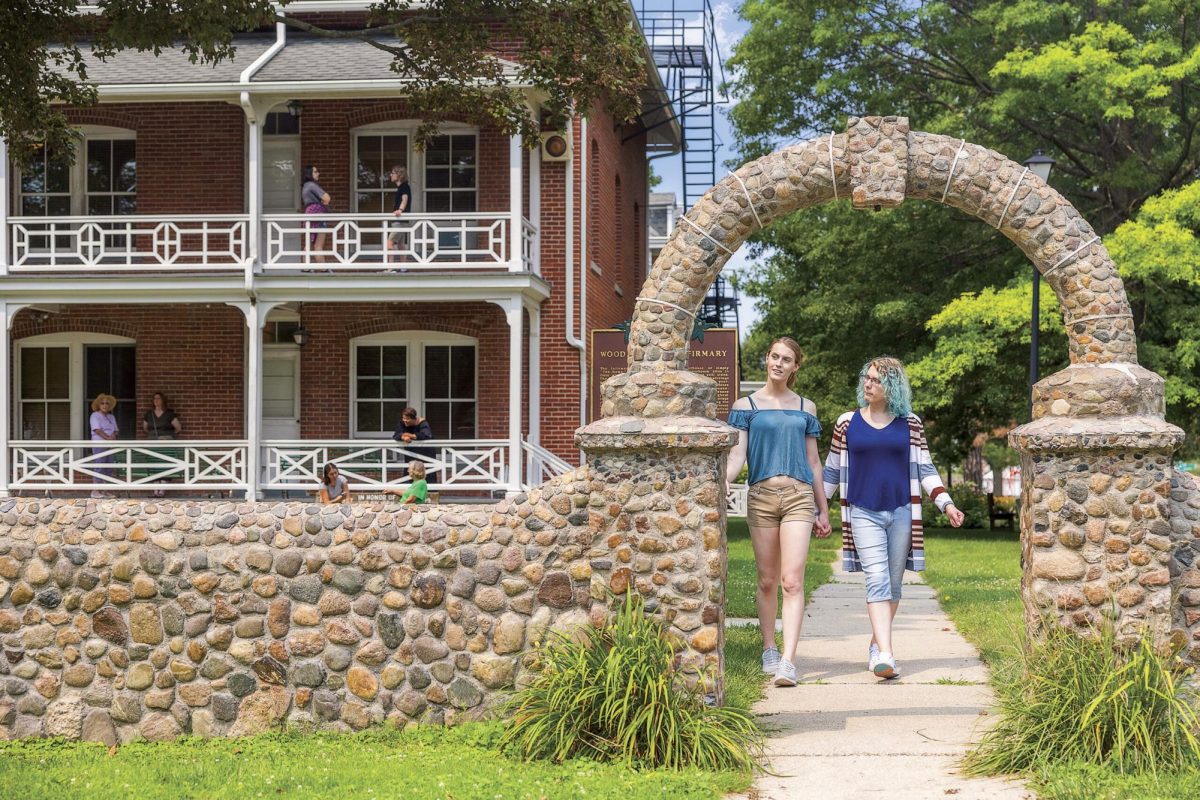Continuing a more than 150-year-old tradition in the United States, Rick ‘ Carl’s Trees, Bowling Green, and North Branch Nursery, Inc., Pemberville, grow and sell evergreen trees for the Christmas season.
Christmas trees were first sold in the United States in 1851 when Mark Carr hauled two ox sleds loaded with trees to the streets of New York and sold them.
Christmas tree farming is like growing any other crop, but more time and patience is needed.
The average Christmas tree, which is between six and eight feet tall, takes about 10 years to grow. For a first crop, this can be a big investment, according to the Web site urbanforest.org.
Once the seedlings for the different types of trees are planted and start to grow, the branches have to be trimmed. Trimming takes place every year in order for the tree to maintain the traditional Christmas tree look, said Rick Johnson of Rick and Carl’s Trees.
Johnson began the tree farm 20 years ago with his father. Johnson’s father went to Michigan and started growing trees, while Johnson stayed in Ohio as a carpenter. After being laid off because of slow work in the winter, Johnson decided to take out a loan and start growing trees of his own.
The next year his father joined him in Ohio, creating what is known today as Rick ‘ Carl’s Trees.
Because the farm is family owned, everyone in the family helps out.
“From my mother to my nieces, everyone is doing things,” Johnson said. “They help plant and fertilize the trees.”
The most popular Christmas trees are the Frasier fir and Scotch pine. Among these, White pine, Douglas fir, Canaan Fir, White spruce and others are sold on Rick ‘ Carl’s lot.
North Branch Nursery, Inc. sells these trees plus a few others.
Tom Oberhouse, owner of the nursery, said that these trees are the most common in the northwest.
Unlike Johnson, Oberhouse found himself in the Christmas tree business by mistake.
“I planted some evergreens for landscaping purposes and about five years later some people came by wanting to buy one, ” Oberhouse said. “We ended up selling three evergreens that year.”
Oberhouse, along with his wife, like selling Christmas trees. “It’s a fun business, and we assume people who buy trees will come back for landscaping needs,” he said.
North Branch Nursery is open year- round selling all kinds of trees throughout the year. They even end up selling a few Christmas trees outside of the Christmas season.
The price range of the trees depend on what type of tree and how tall it is.
Johnson sells their most expensive tree, the Frasier fir at $44 for a six- foot tree. While a Scotch pine, the least expensive tree Johnson offers, sells for $24 and is six feet tall.
According to Johnson, he allows his trees can get up to 12-feet tall, making the tree more expensive the taller it gets.
Oberhouse sells his trees at a different price range.
A five-foot tree can sell between $12 and $13 while a 14-foot tree would sells for $90. Prices also depend on the type of tree the customer is looking at.
According to Johnson, there are many steps that can be taken to prolong the life of pine trees.
“When you buy a tree, it is always good to cut an inch off of the bottom. If a cut tree sits too long, the sap will cover the bottom and it will die,” he said. “Also, if you keep the tree too dry, the sap will fall to the bottom, clogging the pores.”
Johnson sells his trees in the Foodtown lot.
According to Johnson, these trees are better, because customers can cut them as needed.
Johnson is not discouraged by the fact that artificial trees tend to have most of the market, but rather is encouraged because he does see customers come back every year.
Oberhouse agrees as he saw at least a 15 percent increase in sales during the 2001 Christmas season.
“Due to Sept. 11, I think families wanted to spend more time at home together,” he said. “Besides, we make a better profit on Christmas trees.”
According to the National Christmas Tree Association, 30 million Christmas trees are sold each year. Of those, 90 percent are grown on special Christmas tree farms.


















